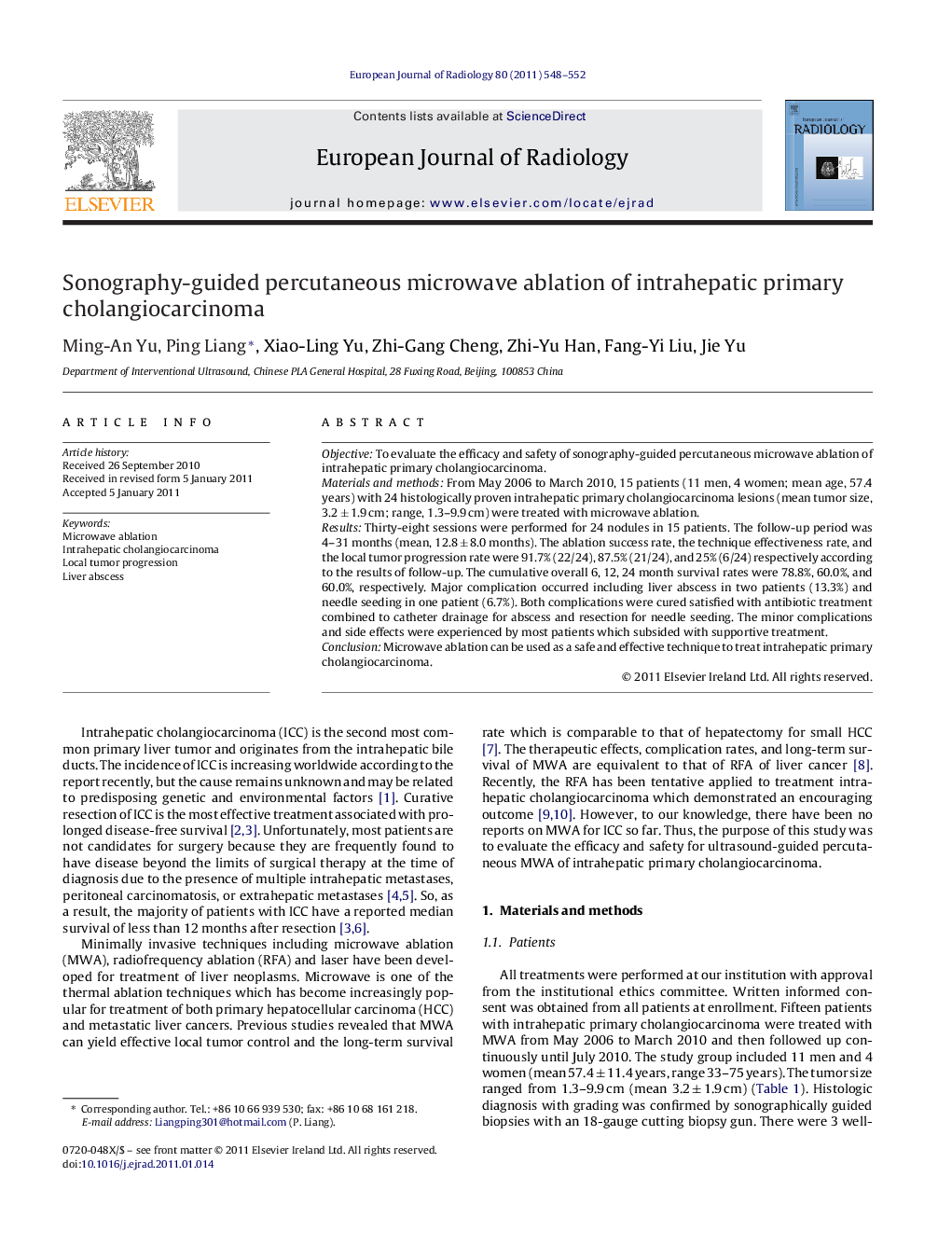| Article ID | Journal | Published Year | Pages | File Type |
|---|---|---|---|---|
| 4226221 | European Journal of Radiology | 2011 | 5 Pages |
ObjectiveTo evaluate the efficacy and safety of sonography-guided percutaneous microwave ablation of intrahepatic primary cholangiocarcinoma.Materials and methodsFrom May 2006 to March 2010, 15 patients (11 men, 4 women; mean age, 57.4 years) with 24 histologically proven intrahepatic primary cholangiocarcinoma lesions (mean tumor size, 3.2 ± 1.9 cm; range, 1.3–9.9 cm) were treated with microwave ablation.ResultsThirty-eight sessions were performed for 24 nodules in 15 patients. The follow-up period was 4–31 months (mean, 12.8 ± 8.0 months). The ablation success rate, the technique effectiveness rate, and the local tumor progression rate were 91.7% (22/24), 87.5% (21/24), and 25% (6/24) respectively according to the results of follow-up. The cumulative overall 6, 12, 24 month survival rates were 78.8%, 60.0%, and 60.0%, respectively. Major complication occurred including liver abscess in two patients (13.3%) and needle seeding in one patient (6.7%). Both complications were cured satisfied with antibiotic treatment combined to catheter drainage for abscess and resection for needle seeding. The minor complications and side effects were experienced by most patients which subsided with supportive treatment.ConclusionMicrowave ablation can be used as a safe and effective technique to treat intrahepatic primary cholangiocarcinoma.
